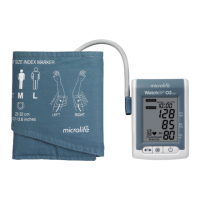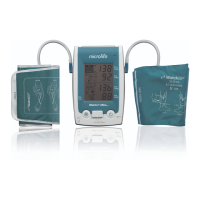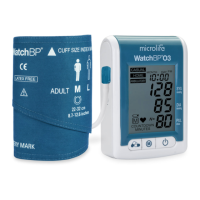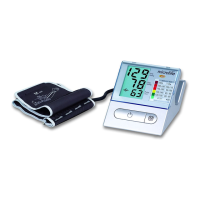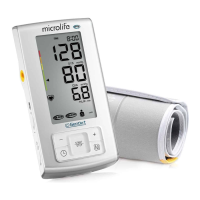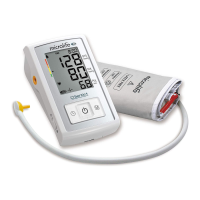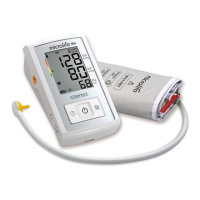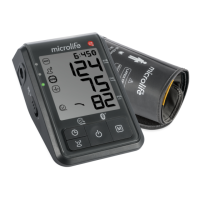Do you have a question about the Microlife WatchBP Home and is the answer not in the manual?
Instructions for setting up the device for the first time, including year, month, day, and time.
Guidance on choosing the appropriate cuff size (medium or large) for accurate measurements.
Details on using the diagnostic mode as per ESH guidelines for blood pressure measurement.
Guidelines for measurement frequency (7 consecutive days) and timing (morning/evening) in diagnostic mode.
Details on extended measurement times and when to take the device for doctor evaluation.
Instructions for performing regular blood pressure measurements using the 'USUAL' mode.
Information on the device's capacity to store up to 250 measurements in 'USUAL' mode.
Guidance on avoiding certain activities and setting up a comfortable environment for measurement.
Instructions on correctly applying the cuff and relaxing for at least five minutes before measurement.
Details on body posture, countdowns, and the two-measurement cycle in DIAG. mode.
Information on automatic data storage and the doctor symbol indicator in DIAG. mode.
Explains the device's capability to screen for atrial fibrillation during blood pressure measurements.
Background information on atrial fibrillation, its causes, risks, and detection methods.
How the device screens for atrial fibrillation, potential causes of false detection, and recommended actions.
Recommendations for regular screening, actions upon detection, and consulting a doctor.
Information for healthcare professionals regarding device readings and confirmation via EKG.
Steps to view stored measurements, including averages and total counts, in the diagnostic mode.
How to view AFib detection counts, total readings, and averages in the usual mode.
Procedure for deleting stored measurement data independently for DIAG. and USUAL modes.
Steps to confirm deletion of measurements in the selected mode, indicated by a beep sound.
Instructions for installing the WatchBP Analyzer Home A software program on a computer.
Steps for connecting the device and transferring measurement data to the computer software.
Overview of software commands for data transfer, storage, viewing, printing, and deletion.
Explanation of the battery symbol and instructions for replacing low batteries with new ones.
Guidance on operating the device using a Microlife power adaptor and its connection.
Important safety precautions for device usage, handling, and protection from hazards.
Instructions for cleaning the device and cuff, and proper disposal of batteries and electronics.
Recommendation for periodic accuracy testing of the blood pressure monitor.
Explanation of error messages 'Er 1' (Signal too weak) and 'Er 2' (Error signal) and their remedies.
Explanation of error messages 'Er 3', 'Er 5', 'HI', 'LO' and their potential causes and remedies.
Confirmation of the importance of home blood pressure measurements for accurate health assessment.
Explanation of systolic, diastolic values, pulse rate, and factors affecting blood pressure.
Table classifying blood pressure readings (systolic/diastolic) into categories based on ESH guidelines.
Detailed technical specifications including operating conditions, measurement range, and compliance with standards.
Details on the five-year guarantee, its validity, and what parts are covered.
| Type | Automatic |
|---|---|
| Certification | EU Directives 93/42/EEC\\r EN 1060-1/-3/-4, ANSI / AAMI SP10, IEC 60601-1, \\r IEC60601-1-2 |
| Pulse rate range | 40 - 200 |
| Placement supported | Upper arm |
| Pulse rate measuring | Yes |
| Units of measurement | bpm, mmHg |
| Mean arterial pressure | - |
| Battery type | AA |
| Battery voltage | 1.5 V |
| Number of batteries supported | 4 |
| Display type | LCD |
| Depth | 100 mm |
|---|---|
| Width | 150 mm |
| Height | 50 mm |
| Weight | 385 g |

